1. Leadville, Colorado
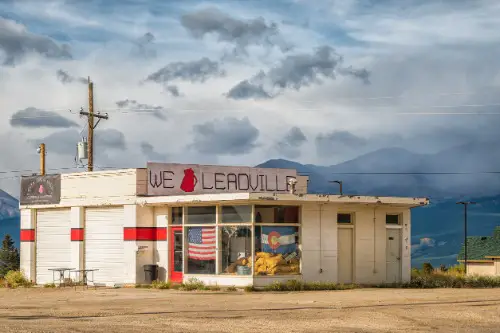
Leadville, Colorado, rose to prominence during the silver rush of the 1870s. By the late 19th century, the town had become a hub for mining, attracting tens of thousands of settlers and miners. At its peak, Leadville’s population swelled to around 40,000, and it became a thriving town filled with lavish mansions and ornate buildings. The wealth generated by silver mining made it one of the most prosperous towns in the west.
However, Leadville’s boom was short-lived. By the early 1900s, falling silver prices and a series of labor strikes began to cripple the local mining industry. Leadville’s population dwindled, and the once-vibrant community was left nearly deserted. Despite its decline, Leadville managed to survive as a historical landmark and tourist destination, offering visitors a glimpse into Colorado’s mining heritage.
2. Picher, Oklahoma
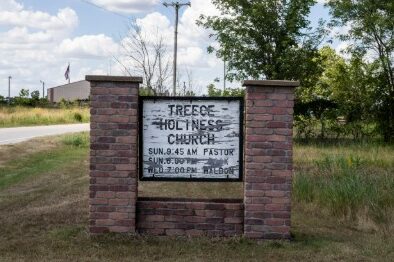
Picher, Oklahoma, is one of the most tragic examples of a town that disappeared due to environmental disasters. Once a prosperous mining town, Picher was famous for its lead and zinc production, which attracted thousands of miners in the early 20th century. At its peak, the town had around 14,000 residents. However, the environmental cost of the mining operations was devastating, as large amounts of toxic heavy metals polluted the air and water. Lead contamination became widespread, and residents began to suffer from various health issues, particularly lead poisoning.
By the 1980s, the Environmental Protection Agency (EPA) designated Picher a Superfund site, recognizing the dangerous levels of toxins in the area. As the toxic pollution became more apparent, residents were urged to leave, and by the early 2000s, the town was abandoned. Today, Picher remains a haunting ghost town, with crumbling buildings and the lasting memory of the environmental destruction that led to its demise. The site serves as a cautionary tale of industrial progress gone wrong.
3. Bodie, California
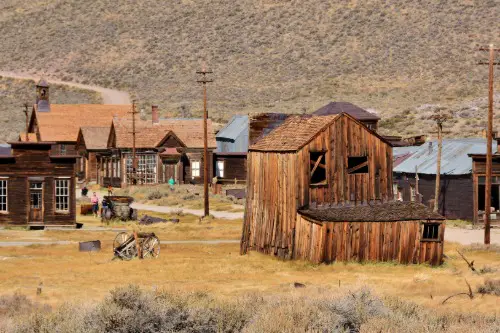
Bodie, California, is a quintessential ghost town, offering a glimpse into the chaotic days of the Gold Rush era. Founded in the late 1800s, Bodie saw its population explode as gold was discovered nearby. At its peak, the town was home to over 10,000 people and boasted a vibrant town center filled with saloons, shops, and even a schoolhouse. However, the town’s fortunes were closely tied to the gold mines, and once the gold ran dry, the town’s prosperity quickly crumbled.
By the early 1900s, Bodie began to see its population dwindle, and by 1912, a devastating fire accelerated its decline. With its once-thriving business community now gone, the town was abandoned. Today, Bodie is preserved in a state of “arrested decay,” with its buildings carefully maintained in their deteriorated state, offering visitors a haunting snapshot of a bygone era. Bodie is now a state park and a popular tourist destination for those interested in California’s mining history.
4. Tonopah, Nevada
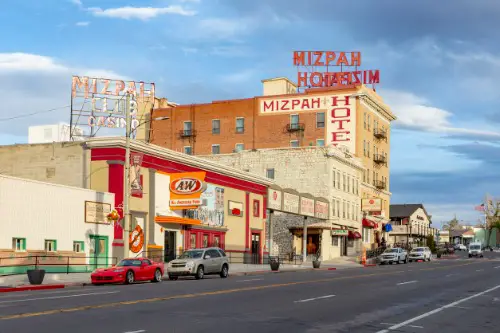
Tonopah, Nevada, was born out of the silver rush of the early 20th century, and it briefly experienced a burst of prosperity that made it a bustling town. Discovered in 1900, the silver mines around Tonopah quickly attracted miners and settlers from all over. At its peak, the town boasted a population of over 5,000, and it was home to hotels, stores, a post office, and even a hospital. It was also known for its thriving nightlife, with plenty of saloons and gambling establishments for miners to blow off steam after a long day in the mines.
Unfortunately, as quickly as it boomed, Tonopah began to fade. The silver mines started to run dry by the 1920s, and the Great Depression further decimated the town’s economy. With the collapse of the silver market, residents began moving elsewhere, and by the 1940s, Tonopah had become a shadow of its former self. Today, Tonopah is a popular stop for history buffs, with the Tonopah Historic Mining Park offering a glimpse into the mining operations of yore.
5. Ashcroft, Colorado
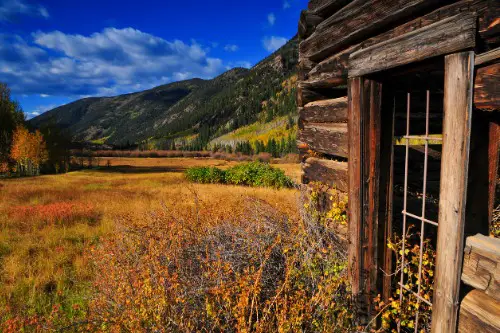
Ashcroft was once a promising silver mining town nestled in the Colorado Rockies. Founded in the 1880s, the town was known for its high-quality silver deposits, which attracted hundreds of miners. At its peak, Ashcroft had around 2,000 residents and boasted the typical amenities of a prosperous mining town, including saloons, stores, and a school. However, the silver veins began to deplete as early as the mid-1890s, and Ashcroft’s population started to dwindle.
The final blow came in the early 1900s when the price of silver dropped drastically, and the town was officially abandoned by the early 20th century. Today, Ashcroft is a well-preserved ghost town, and its buildings, which include a couple of original homes, a hotel, and the remains of old mining equipment, still stand. Located just outside of Aspen, Ashcroft’s picturesque setting against the backdrop of the towering Colorado peaks adds to the eerie atmosphere.
6. Cahawba, Alabama
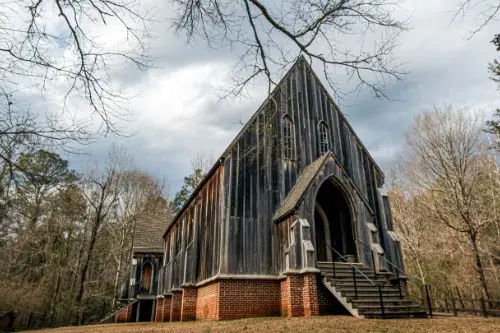
Cahawba was Alabama’s first state capital and holds a unique place in the history of the state. Founded in the early 1800s, it was strategically positioned on the banks of the Alabama River, which made it an ideal location for trade and transportation. For a time, Cahawba was thriving, with brick homes, bustling markets, and a busy political and economic scene. The town was particularly important during the early days of Alabama’s statehood, but Cahawba’s success was short-lived, as it was quickly undermined by both natural disasters and political turmoil.
In the 1820s and 1830s, Cahawba began to flood regularly, and its geographical location made it difficult to prevent these floods. During the Civil War, the town’s strategic importance diminished, and after the war, its population dwindled further. By the 1870s, Cahawba had virtually disappeared, with its buildings deteriorating into ruin. Today, the site of Cahawba is preserved as a state historic site, where visitors can explore the remnants of the old state capital, including crumbling brick homes, the remains of the old courthouse, and the foundations of long-abandoned structures.
7. Millville, New Jersey

Millville, New Jersey, once known as “The Glass City,” has a rich industrial history. In the late 19th and early 20th centuries, Millville was home to several glass factories that produced high-quality glassware, making it a prominent center for glass manufacturing. The town thrived as a center of production and trade, drawing in thousands of workers and their families. However, like many industrial towns, Millville’s fortune was tied to the success of its factories, and as demand for glass products began to decline and competition increased, the factories started to close.
The onset of the Great Depression further hastened Millville’s economic collapse. Many factories shut their doors, and the town’s once-booming economy went into a sharp decline. By the mid-20th century, most of Millville’s population had moved elsewhere in search of work, and the town gradually faded from the map. Today, remnants of the glassworks remain, and some of the old industrial buildings have been preserved, but the town’s industrial past is largely a memory.
8. Centralia, Pennsylvania

Centralia is perhaps the most famous ghost town in the United States, and it has a hauntingly unique backstory. The town’s decline began in the 1960s, when a fire broke out in an abandoned coal mine beneath the town. The fire, which likely started as a controlled burn in a landfill, spread into the coal seams underground. The underground fire has caused the ground to sink and emit dangerous levels of carbon monoxide and other toxic gases, making the town uninhabitable.
In the 1980s, after several serious incidents, including a sinkhole that nearly swallowed a car, the government intervened and decided that it was no longer safe for people to live in Centralia. The town’s population dwindled, and by the 2000s, the last few residents were forced to leave. Today, the area is officially abandoned, but it still holds a strange attraction for tourists. The remaining buildings are falling apart, but eerie plumes of smoke still rise from cracks in the ground, creating a surreal atmosphere.
9. Rhyolite, Nevada
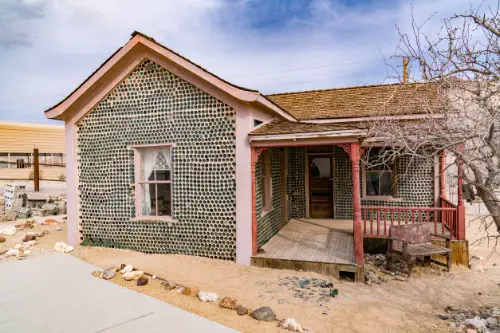
Rhyolite, Nevada, was one of the most spectacular examples of a boomtown that burned bright and then disappeared just as quickly. Located near the eastern edge of Death Valley, Rhyolite was founded in 1905 after gold was discovered nearby. Within a few short years, the town had grown from a small camp to a bustling community with over 5,000 residents. Rhyolite had all the trappings of a prosperous city—hotels, theaters, a school, and even a stock exchange. It seemed like it would last for the long haul.
But like so many other boomtowns, Rhyolite’s prosperity was short-lived. By 1911, the gold veins started to dry up, and the mines became less profitable. As miners moved on to other locations, so did the town’s economy. Within just 15 years, Rhyolite had been abandoned. Today, it stands as one of the most photographed ghost towns in the U.S.
10. Kennecott, Alaska
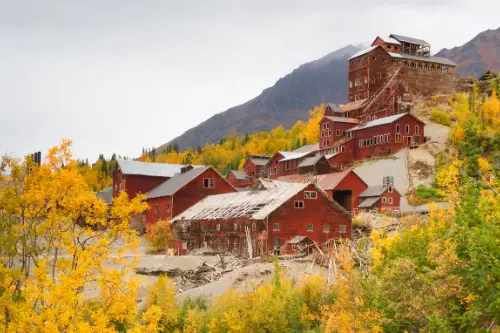
Kennecott, Alaska, was once a bustling copper mining town during the early 1900s. It sprang to life in 1911 when rich veins of copper were discovered in the nearby mountains. The town’s population grew rapidly, peaking at around 300 people, and the Kennecott Copper Corporation built an entire industrial complex to extract and refine the copper. The town boasted all the amenities of a modern mining community—homes, a hospital, schools, and even a post office.
However, like many mining towns, Kennecott’s prosperity was tied to the life of the mine itself. As the copper ore became harder to extract and less profitable, the mining operations began to slow down. By 1938, the mine had closed, and with it, the town. The residents left, and Kennecott was abandoned, leaving behind an eerie collection of decaying buildings and rusted machinery. Today, Kennecott is a ghost town, but it is also a popular tourist destination.
11. Bannack, Montana
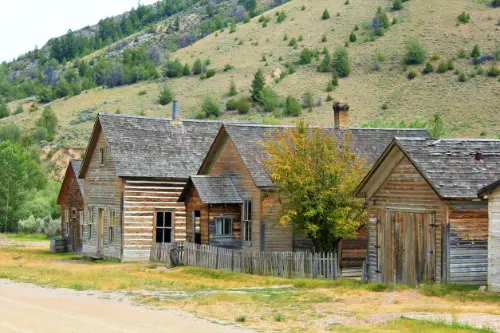
Bannack holds a special place in Montana’s history as the site of the state’s first major gold discovery in 1862. When gold was found in Grasshopper Creek, it sparked a massive gold rush, attracting thousands of miners and settlers to the area. At its height, Bannack was a thriving town of 3,000 people, and its success led to it becoming the first capital of Montana Territory in 1864. The town was home to a mix of miners, shopkeepers, and saloon owners, but it also had a rough side—lawlessness was common, and the town’s early years were marred by violent skirmishes between settlers and Native American tribes.
But by the late 1860s, as the gold reserves began to dwindle, Bannack’s fortunes started to decline. People began moving on to other gold-rich areas, and the population slowly shrank. By the turn of the century, Bannack had faded into obscurity. Today, Bannack is a state park, preserved as a historical site with over 50 standing buildings, including the original courthouse and a large hotel. Unlike many other ghost towns, Bannack hasn’t been completely lost to the elements, and the buildings are well-maintained.
12. River Raisin, Michigan
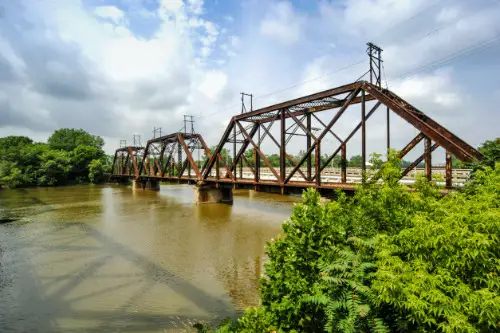
River Raisin, Michigan, was once a bustling trade hub in the early 1800s. Its location along the River Raisin made it a strategic site for settlers looking to establish trade routes and establish military footholds during the War of 1812. The town became an important point for commerce and grew into a prosperous community with farms, shops, and a number of established businesses. However, the town’s fortunes began to unravel after the War of 1812, when it faced severe economic hardships.
In 1837, a catastrophic fire swept through the town, destroying much of its infrastructure and significantly damaging the local economy. Although River Raisin attempted to rebuild after the fire, the town struggled to recover and suffered further economic setbacks. As larger cities in Michigan began to grow, River Raisin lost its relevance, and by the 1850s, most of its residents had relocated.
13. Glenwood Springs, Colorado
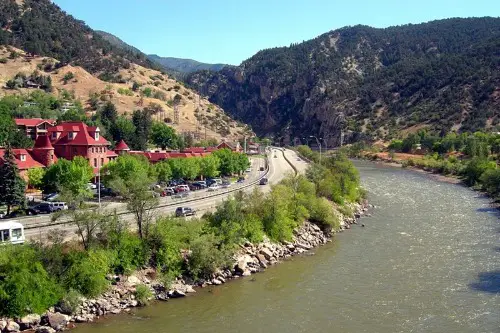
Glenwood Springs, Colorado, was initially a thriving resort town known for its healing hot springs. Located in the heart of the Colorado Rockies, it attracted visitors looking for a retreat in the late 1800s. The town’s hot springs were believed to have therapeutic benefits, and soon hotels, spas, and attractions began popping up around the area. By the turn of the century, Glenwood Springs had developed into a popular vacation destination for wealthy tourists.
Unfortunately, the construction of nearby railroad lines and the rise of other resort towns reduced Glenwood Springs’ appeal. The arrival of modern infrastructure elsewhere led to a decline in visitors, and the town began to fade from its once-prominent position. By the mid-1900s, Glenwood Springs saw its population diminish, and the town almost became a forgotten piece of Colorado’s resort history. Today, however, the town has found new life as a small tourist destination with a mix of history and outdoor recreation.
14. Eureka, Utah
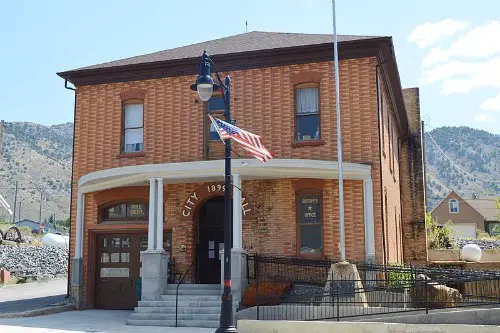
Eureka, Utah, was once a bustling mining town in the late 1800s, particularly known for its rich deposits of silver and copper. With the arrival of the railroad in the 1870s, the town’s population grew rapidly, reaching around 2,000 people by the late 19th century. The town was a lively place, with businesses, saloons, and a theater. Mining was the heart of Eureka’s economy, and the town seemed set to thrive for years to come.
However, by the early 1900s, the town’s fortunes began to change. As mining operations became less profitable and resources dwindled, the population began to shrink. By the mid-20th century, Eureka had become a near ghost town, and much of its mining infrastructure had been abandoned. Today, Eureka remains a small town, with a few preserved historic buildings reminding visitors of its once-thriving days.


